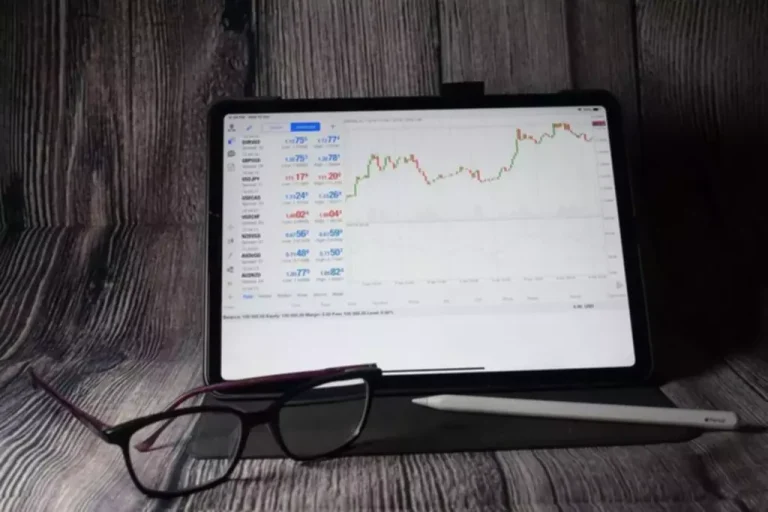To further verify the security of your protocol, think about hiring impartial auditors and using formal verification strategies. Liquidity pools are also What Are Liquidity Pools in Crypto concerned in generating synthetic assets on the blockchain. You can add collateral to a liquidity pool and link it to a trusted oracle, therefore acquiring a synthetic token. Sometimes a substantial number of token votes are needed to put forward a formal governance proposal.
Why Liquidity Pools Are Important In Defi
The value and price of cryptocurrencies depend on market sentiment, and any centralized establishment does not regulate it. Public sentiment in direction of crypto and its value changes over time, and it was identified to dip, however in the lengthy term, the market has all the time recovered after a setback. A token’s weight is how much its price accounts for the whole value inside the pool. In some situations, there’s a very excessive threshold of token votes wanted to have the power to put forward a formal governance proposal. If the funds are pooled collectively in its place, individuals can rally behind a regular trigger they deem needed for the protocol.
Liquidity Provision In Centralised Markets

The previous calculation assumes that impermanent loss is calculated for only one asset. Furthermore, one of many belongings is presumed to be stable, which may or is probably not the case. An AMM is a software program algorithm that controls the liquidity and pricing of cryptocurrencies on decentralized platforms similar to DEXs. If the supplier needs to deposit 10 BTC, they must additionally deposit seven-hundred,000 USDT to hold up the required steadiness. The first model of Uniswap was launched on the Ethereum mainnet in November of 2018.
Incentivizing Liquidity Suppliers
AMMs make the most of LP tokens to stay custodial and observe the go well with of being permissionless on DEXs. Since full possession of the crypto is in the palms of the crypto traders on DEXs, AMMs don’t take any ownership of the LP tokens. This helps maintain the pricing fair and based mostly on the emotions of the market. The formulation above helps keep the worth fair and as per the quantity out there within the liquidity pool.
Why Not Create Your Personal Liquidity Pool Api For Profitable Trading?
This has led to trades being completed in only a few seconds, with considerably greater liquidity in the market. Users pool funds on automated yield generating platforms, creating yield or earnings. Liquidity mining helps cryptocurrency projects distribute new tokens to customers who contributed to the liquidity pool.

This is called value inefficiency or Slippage – the place the value that a trade is positioned at differs from the executed price as a result of there may be inadequate liquidity to cowl the whole order. The order guide is actually a list of supplies from prospects to purchase or promote a sure quantity of Bitcoin at a selected worth in Euros. Order books automate value discovery by means of the information of the gang.
- It allows users to commerce ERC-20 tokens directly from their wallets with out the need for an middleman.
- If liquidity is just too low, then it creates problem for consumers and sellers to enter or exit positions, and in addition causes swings available within the market with large orders.
- The automated market maker system extensively utilises liquidity from the pools to fulfil orders.
The fascinating thing in regards to the excessive demand for LP tokens is that you could take them to totally different DeFi platforms. As such a lot of the LPs are incentivized with different strategies such the one we’re seeing in the Maiar.commerce, with the MEX token. When a liquidity provider bonds their tokens they flip into eligible for the OSMO rewards. Liquidity means how one can quickly sell or purchase belongings without causing massive waves in the exchange or the tokens’ value.
What Are Lp Tokens And How Do They Work?
There are three key components that make up the liquidity pool — Liquidity Providers (LPs), Liquidity Provider Tokens (LPTs), and Automated Market Makers (AMMs). DeFi transfers the power from the financial middlemen to common people by offering publicity to global markets and alternatives to the prevailing banking choices or local forex. Liquidity pools have emerged as an important part in revolutionizing the way liquidity is provided and utilized. Thus, energetic users who contribute liquidity can actively take part in shaping the future of DeFi initiatives, making certain a more inclusive and distributed ecosystem. Let’s see how a lot impermanent loss you’ll get for different worth adjustments in the ETH/USDC pair. Where X and Y are a pair of belongings in the pool, and K is a continuing that have to be the same before and after the transaction.
In the previous, there have been many situations of hackers exploiting sensible contracts and stealing funds. But in most cases, your LP tokens are secure via different measures, like bug bounties and such, to maintain the sensible contracts from being the explanation for your loss. If you bring liquidity influx to this pool, you turn into a liquidity provider, and you’ll obtain a liquidity pool token.
However, liquidity suppliers can cowl impermanent losses with transaction fees relying on the deposit period. These DEXs operate using an analogous methodology to centralized exchanges. Liquidity Pool Staking is essential for keeping decentralized exchanges (DEXs) working smoothly. When you stake your belongings in a liquidity pool, you contribute to a shared pool of funds that makes it simpler for people to buy and promote with out causing major value swings. In trade for your contribution, you earn rewards from the buying and selling charges generated by the pool and typically further incentives like particular tokens. You might discover a way to deposit these tokens into another pool and earn a return.
This most frequently comes within the form of liquidity providers receiving crypto rewards and a portion of the trading fees that their liquidity helps facilitate. The first thing you want to understand is that volatility is the deciding issue impacting the dimensions of the impermanent loss. It is an efficient technique in a declining market as a outcome of you’ll still revenue out of your share of trading charges. As you can see, utilizing automated market makers as a liquidity pool is certain to lead to a short lived loss. Let’s focus on options for avoiding or mitigating impermanent loss in yield farming. By promoting DAI at a reduction, the pool is trying to revive the pool to its authentic state.
Constant operate market makers (CFMMs) are perhaps the commonest kind of liquidity pool. These swimming pools use a mathematical formulation to ensure that the worth of the asset adjusts based on the relative present and demand throughout the pool. Uniswap is a well-liked instance of a decentralized change that utilizes CFMMs. To keep up in today’s market, it’s necessary for cryptocurrency exchanges to have one thing referred to as a liquidity API. This device helps smaller exchanges compete with greater ones by offering comparable charges and margins.
Within a liquidity pool, liquidity suppliers stake a portion of their cryptocurrency into the liquidity pool, and it’s locked in by the sensible contract. Liquidity in crypto is essential as plenty of cryptocurrencies typically have decrease market quantity than a lot of other assets corresponding to giant cap equities and currencies. These decrease market cap and fewer traded digital assets are due to this fact susceptible to excessive volatility. Where central exchanges can’t at all times present adequate liquidity, a liquidity pool provides a supply of liquidity. To take part in a liquidity pool and see the method it works for your self, create an account on a decentralized change like Uniswap.

The larger and more in style protocols corresponding to Uniswap, Balancer, and Yearn.finance often reward liquidity suppliers utilizing their very own platform tokens. A Liquidity Pool in Blockchain is a collection of funds locked in a smart contract that is used to facilitate trading on decentralized exchanges (DEXs) and other blockchain-based platforms. These funds are usually offered by customers, often known as liquidity suppliers, who deposit their property into the pool.
It refers to an asset’s ability to be shortly supplied or exchanged for yet one more asset without significantly affecting its value. This applies to conventional finance and emerging blockchain-based financial services and merchandise, typically identified as decentralized finance or DeFi. When someone trades in the pool, they alter the quantity of X or Y, which mechanically adjusts the worth, making certain the product stays fixed. The formulation balances the pool by adjusting costs based mostly mostly on supply and demand. At its core, a liquidity pool is a foundational factor of the DeFi ecosystem, serving as a reservoir of funds locked in a sensible contract. In liquidity pools, there is not any counterparty who has to match your order, your tokens come straight from the provided funds.
Read more about https://www.xcritical.in/ here.